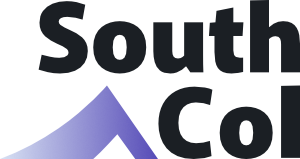12 May Reading Between the Lines, Part Three: The Paycheck Protection Program and Market Update
As we enter the second full week of May, collective outlook regarding the COVID-19 pandemic is decidedly optimistic. Municipalities around the globe are formulating strategies to reopen businesses and government-sponsored recovery efforts have aided in stabilizing the financial markets.
Weekly Macro U.S. Markets Roundup (May 4-8)
| Start: | End: | Change: | |
| Dow Jones Average | 23,749.76 | 24,331.32 | UP 2.45% |
| S&P 500 Composite | 2,842.74 | 2,929.80 | UP 3.06% |
| 10-Year US Treasury Bond | 0.64% | 0.69% | Yield Up 4 Bps |
| Global X E-Commerce ETF (EBIZ) | 18.52 | 20.60 | UP 11.23% |
| ProShares Online Retail ETF (ONLN) | 41.07 | 45.08 | UP 9.76% |
| Emerging Markets Internet & Ecommerce ETF (EMQQ) | 34.22 | 37.60 | UP 9.87% |
Several key financial indicators including the Dow Jones Industrial Average and the S&P 500 continue to show healthy growth. The surge in e-commerce continues to prevail as more consumers opt for online shopping and home delivery.
The Paycheck Protection Program
Initial loans from the Small Business Administration’s Paycheck Protection Program were exhausted within a few weeks of launch. Additional funding of $310 Billion was approved by Congress and the program resumed on Monday, April 27. Through May 11, approximately $120 Billion remained available for new loans. The SBA also published an updated FAQ document, which can be found here.
M&A Update
Activity in the M&A market across most traditional sectors has reduced significantly as the overall effect of COVID-19 and the actions taken by governments on most traditional businesses remains difficult to quantify. In addition, many traditional market participants remain focused on making sure their core businesses and portfolio companies are stable versus looking for new transactions. E-commerce and related businesses, however, have continued to buck that trend and deal activity remains somewhat robust. Market appetite for E-commerce and related businesses appears to be increasing as more capital searches to increase exposure to this sector.
E-commerce businesses report steady growth and are receiving increased attention in the marketplace. Noteworthy categories such as Health & Wellness, Fitness Equipment, and Medical Supplies continue to do well across the board.
Return to A New Normal
Many states are scheduled to reopen within the month. However, which businesses will be allowed to resume operations and when varies wildly from state to state. Read this article for a quick rundown of changes to shutdown restrictions in the U.S.
Although we may soon return to business and establish a “new normal”, it is unclear what the long-term effects of the pandemic will be. For instance, social distancing measures and forced shutdowns led to widespread adoption of remote work technology. Many companies may opt to transition to digital operations rather than return to a leased office space. This will likely have a material impact on how business is conducted in the future.
At present, we are experiencing a dramatic shift in where business is taking place. A growing number of consumers have transitioned to shopping with digital businesses as a direct result of self-isolation efforts, resulting in an exponential increase in e-commerce activity. There are 112 million Amazon Prime subscribers in the U.S. alone, and more than half of all sales come from third-party seller.
Several off-Amazon direct to consumer brands are also thriving as COVID-19 forces people to stay indoors and online. Peloton (PTON) reported a 66% growth in revenue. Wayfair sales increased 20% over the same period last year, while Overstock’s April 2020 sales jumped 120% from April 2019.
Update to Amazon’s COVID-19 Response
Amazon has reopened non-essential items for restock. Customers continue to experience long wait times, even through Amazon Prime. The e-commerce giant’s infrastructure has been strained due to its response to the COVID-19 as the company continues to prioritize shipment of essential goods over non-essential purchases.
Despite the surge in online shopping, Amazon’s private label brands are losing market share to smaller competitors. Several other well-established e-commerce players (like Wal-Mart and Target) are picking up the slack by taking full advantage of Amazon’s temporary inability to keep up. Consequently, many online retailers will come out of COVID-19 in a more advantageous position than was previously possible.
Miss our previous updates in this series? Read Part 1 and Part 2 here.
Global Wired Advisors will continue to track new developments, and we will continue to publish regular updates to keep you prepared and informed. We are here to help in these uncertain times. Please do not hesitate to contact us should you have any questions or concerns about the state of the economy or your business in particular.



Sorry, the comment form is closed at this time.